The Blue Tetra, also known as Mimagoniates microlepis or the croaking tetra, is a peaceful species of tetra that carries a blue to bluish-green color. Despite their small size, these active swimmers require more space in an aquarium.
They may exhibit slight aggression towards small fish and species with long, thin fins during feeding. Blue tetras are attractive and sought-after fish, known for their vibrant coloration. They are native to the Amazon Basin and can be found in rivers and streams.
We will explore the care and breeding of Blue Tetras, suitable tank mates, ideal tank size, and more.
Table of Contents
Understanding The Blue Tetra
Blue Tetra, also known as Mimagoniates microlepis, is a species of tetra known for its blue to bluish-green coloration. These small, active fish are generally peaceful but can be slightly aggressive towards smaller fish during feeding. They require a tank with enough space to swim freely.
The Blue Tetra, scientifically known as Mimagoniates microlepis, is a small-sized tetra species. Its stunning appearance and peaceful nature make it a popular choice among fish enthusiasts. Let’s delve into the details of its appearance, coloration, and natural habitat.
Appearance And Coloration:
- The Blue Tetra boasts an enchanting appearance, with its streamlined body shape and vibrant coloration.
- This species has a slender body structure, which is slightly elongated from the side.
- The average size of the Blue Tetra ranges between 1.5 to 2 inches (3.8 to 5 centimeters).
- It features a beautiful silvery-blue hue that spans across its body.
- The stunning coloration of the Blue Tetra intensifies when viewed under proper aquarium lighting.
Natural Habitat:
- Blue Tetras are native to the freshwater streams and tributaries of South America, specifically in regions like Brazil and the Amazon basin.
- In the wild, they occupy shoals and prefer to inhabit slow-moving and calm waters.
- The natural environments of the Blue Tetra are densely vegetated, providing them with ample hiding spots and protection.
- These tetras thrive in water temperatures ranging from 73 to 82 degrees Fahrenheit (23 to 28 degrees Celsius).
- They are most comfortable in soft, acidic water conditions, with a pH level between 5.0 and 7.0.
Understanding the appearance and natural habitat of the Blue Tetra is crucial for providing them with optimal care in aquarium settings. Let’s explore more about their behavior, tank mates, and suitable tank sizes.
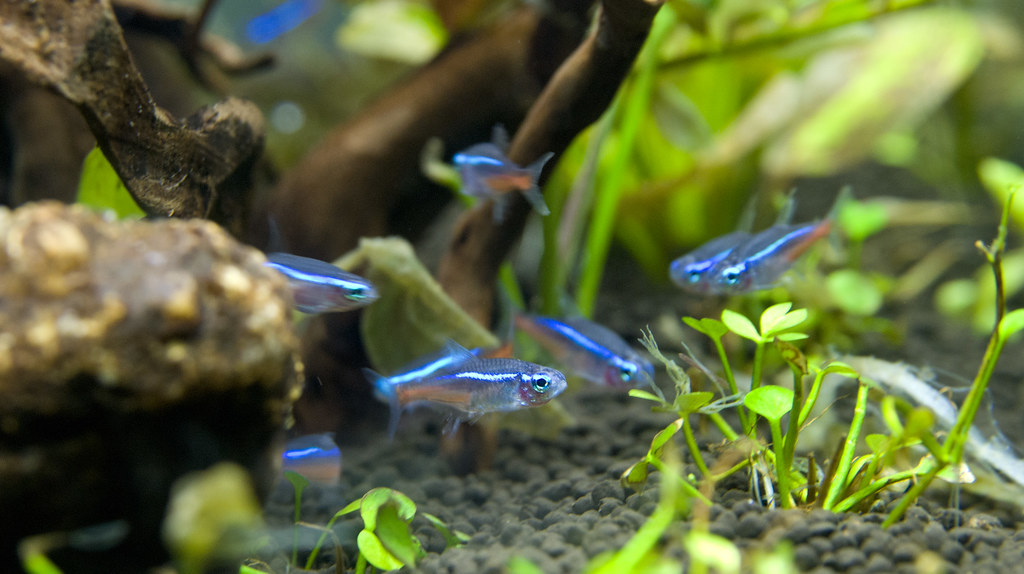
Setting Up The Perfect Environment
The Blue Tetra, also known as Mimagoniates microlepis, is a species of tetra known for its attractive blue to bluish-green color. These active fish require a tank that provides plenty of space for swimming. Avoid housing them with fish that have long, thin fins, as Blue Tetras can be fin-nippers.
Blue Tetras, also known as Mimagoniates microlepis or Croaking Tetras, are vibrant and beautiful fish that add a splash of color to any aquarium. To ensure their health and well-being, it’s crucial to set up the perfect environment for them.
This section will guide you through the essential factors to consider when setting up a tank for Blue Tetras.
Tank Size And Setup
When it comes to Blue Tetras, the size of the tank plays a significant role in their overall well-being. Here are some important points to keep in mind:
- The recommended tank size for Blue Tetras is at least 20 gallons.
- A larger tank provides more swimming space for the fish and allows for better water circulation.
- Provide hiding spots and plants to mimic their natural habitat and create a stress-free environment.
- Make sure the tank is securely covered as Blue Tetras are known for their jumping ability.
Water Parameters For Blue Tetras
Maintaining the right water parameters is essential for the health and happiness of Blue Tetras. Here are the key factors to consider:
- Water temperature should be kept between 72°F and 78°F (22°C – 26°C).
- The pH level should be around 6.5 to 7.5.
- Ammonia and nitrite levels should always be at zero, while nitrate levels should be kept low.
- A good filtration system and regular water changes are necessary to maintain optimal water quality.
Substrate And Decoration
Choosing the right substrate and decorations can greatly enhance the aesthetic appeal of your Blue Tetra’s environment. Consider the following:
- Use fine-grained sand or smooth gravel as the substrate, as Blue Tetras like to dig and sift through the substrate.
- Live plants, such as Java Fern or Amazon Sword, provide hiding spots and help maintain water quality.
- Floating plants like Water Sprite or Frogbit provide shade and create a natural feel.
- Driftwood or rock structures can add visual interest and create hiding spots for the fish.
Setting up the perfect environment for your Blue Tetras not only ensures their well-being but also provides an attractive display for your enjoyment. Consider these factors when creating their habitat to create a vibrant and thriving aquarium.
Blue Tetra Tank Mates
Blue Tetra tank mates include peaceful fish such as rasboras, small tetras, and guppies. It is important to avoid housing them with fish that have long, thin fins as Blue Tetras are known to be fin-nippers.
Are you considering adding Blue Tetras to your aquarium? It’s important to choose tank mates that will live harmoniously with these stunning fish. Blue Tetras are generally peaceful, but they can display some aggression, especially when it comes to feeding.
To ensure a peaceful and comfortable environment for your Blue Tetras, here are some compatible fish species to consider:
- Harlequin Rasboras: These small, colorful fish are a great fit for a Blue Tetra tank. They are peaceful and have similar water parameter requirements.
- Corydoras Catfish: Corydoras Catfish are bottom-dwellers and make excellent tank mates for Blue Tetras. They are peaceful and help keep the tank clean.
- Neon Tetras: Neon Tetras and Blue Tetras go well together due to their similar size and peaceful nature. They create a beautiful contrast in the aquarium.
- Guppies: Guppies are another good choice as tank mates for Blue Tetras. They are active swimmers and add a vibrant touch to the tank.
- Bristlenose Plecos: These small, algae-eating catfish make great companions for Blue Tetras. They are peaceful and help maintain a clean and healthy aquarium environment.
When selecting tank mates, it’s essential to avoid aggression and fin-nipping, as Blue Tetras can exhibit these behaviors. To prevent any conflicts, here are some tips to follow:
- Ensure that the tank is spacious enough to provide each fish with enough personal space.
- Avoid housing Blue Tetras with fish that have long, thin fins, as they can become targets for fin-nipping.
- Keep an eye on the feeding process, as Blue Tetras may become slightly aggressive during feeding time. Provide plenty of food to reduce competition and minimize aggression.
By following these guidelines and choosing compatible tank mates, you can create a peaceful and visually appealing aquarium for your Blue Tetras. Make sure to monitor their behavior and make any necessary adjustments to guarantee a harmonious community of fish in your tank.
Feeding And Maintaining Health
Blue Tetra, also known as Mimagoniates microlepis, is a species of tetra that displays a blue to bluish-green color. These active and attractive fish require a larger tank to swim freely and do best when kept with tank mates that don’t have long, thin fins.
They are generally peaceful but may display slight aggression during feeding.
Blue Tetras, also known as Mimagoniates microlepis, are lively and colorful fish that require proper feeding and care to maintain their health. In this section, we will discuss the Blue Tetra diet and feeding schedule, as well as disease prevention and common health issues.
Blue Tetra Diet And Feeding Schedule:
- Blue Tetras are omnivores and have a diverse diet consisting of both plant matter and small invertebrates.
- Their diet should include high-quality flake or pellet food specifically designed for tropical fish.
- Supplement their diet with live or frozen foods such as brine shrimp, bloodworms, and daphnia to provide variety and additional nutrients.
- Feed them small amounts of food 2-3 times a day, ensuring that they can consume the food within 2-3 minutes. Overfeeding can lead to water quality issues.
- Consider providing occasional treats like small pieces of fruits or vegetables to mimic their natural foraging behavior.
Disease Prevention And Common Health Issues:
- Blue Tetras are generally hardy fish, but they can still be susceptible to some common health issues if not properly cared for.
- Maintaining clean and properly balanced water parameters is crucial to prevent diseases and promote overall health. Regular water changes and proper filtration are essential.
- Keep an eye out for signs of stress or disease, such as loss of color, abnormal swimming patterns, or visible external parasites.
- Quarantine new fish before introducing them to the main tank to prevent the spread of diseases.
- If you notice any health issues, it is recommended to consult a veterinarian who specializes in fish health to ensure appropriate diagnosis and treatment.
By following a balanced diet and paying attention to their overall health, you can keep your Blue Tetras vibrant and active for years to come. Remember to provide them with a suitable environment and the care they need to thrive.
Blue Tetra Breeding
Blue Tetra breeding involves caring for these attractive fish that carry a blue to bluish-green color. Although small, Blue Tetras are active swimmers and require a suitable tank size for their needs. Understanding the breeding process can help maintain their population in captivity.
Blue Tetras, also known as Mimagoniates microlepis or Cochu’s blue tetra, are small-scale tetras that are popular among aquarium enthusiasts. Breeding blue tetras can be a rewarding experience, but it requires creating the right breeding conditions, understanding the spawning process, and providing appropriate care for the fry.
In this section, we will explore each of these aspects in detail.
Creating Breeding Conditions:
To successfully breed blue tetras, it is crucial to create the ideal environment for them. Here are some key points to consider:
- Tank setup:
- Use a breeding tank or a separate tank with a capacity of at least 10 gallons.
- Provide ample hiding spots with plants or caves for the breeding pair.
- Ensure the tank is well-maintained with optimal water parameters such as temperature, pH level, and hardness.
- Choosing the breeding pair:
- Select a healthy and mature male and female blue tetra.
- It is recommended to keep a ratio of one male to two to three females for successful breeding.
- Conditioning the breeding pair:
- Feed the breeding pair with a high-quality diet rich in protein and live or frozen foods to enhance their reproductive health.
- Use color-enhancing foods to enhance their vibrant blue coloration.
Spawning Process And Care For Fry:
Blue tetras are egg scatterers, meaning the female scatters her eggs and the male fertilizes them. Here’s what you need to know about the spawning process and caring for the fry:
- Spawning process:
- Provide a suitable substrate, such as fine-leaved plants or spawning mops, for the female tetra to deposit her eggs.
- The male blue tetra will follow, fertilizing the eggs as they are laid.
- After spawning, promptly remove the adult tetras to prevent them from eating the eggs.
- Caring for the fry:
- Keep the breeding tank dimly lit to minimize stress and promote fry development.
- Feed the fry with infusoria, newly hatched brine shrimp, or specialized fry food.
- Perform regular water changes to maintain water quality and prevent disease.
Raising Healthy Blue Tetra Offspring:
Once the fry have hatched and are growing, it is essential to provide them with optimal care. Here are some tips to ensure the healthy development of blue tetra offspring:
- Tank setup for the fry:
- Transfer the fry to a separate rearing tank once they are free-swimming.
- Maintain pristine water conditions with appropriate filtration, temperature, and water parameters suitable for the fry.
- Feeding the fry:
- Offer small and frequent meals, consisting of finely powdered or liquid fry food.
- Gradually introduce larger food particles as the fry grow.
- Monitoring and maintenance:
- Regularly observe the fry for any signs of disease or stress.
- Perform routine water changes and maintain good hygiene in the rearing tank.
Breeding blue tetras can be a fascinating and rewarding endeavor for aquarists. By providing the right breeding conditions, understanding the spawning process, and ensuring appropriate care for the fry, you can successfully raise healthy blue tetra offspring in your aquarium.
Where To Purchase Blue Tetras
Looking to purchase Blue Tetras? Check out reputable sellers in Austin, Texas, United States, for Mimagoniates microlepis, also known as the Blue Tetra. These attractive, active swimmers display a blue to bluish-green color and make a great addition to your aquarium.
Blue Tetra:
If you’re interested in adding stunning Blue Tetras to your aquarium, you may be wondering where you can purchase these beautiful fish. Here are some reliable sources where you can find Blue Tetras:
Reliable Sources For Blue Tetras
- Local fish stores: Visit your nearest fish store and inquire about the availability of Blue Tetras. They usually have a variety of tropical fish species, including Blue Tetras, and can provide expert advice on their care.
- Online fish stores: Browse through reputable online fish stores that offer a wide range of aquatic species. Ensure that the store is well-established and has positive reviews from customers. Check if they have Blue Tetras in stock and if they provide reliable shipping options.
- Hobbyist breeders: Connecting with hobbyist breeders in your area can be a great way to find Blue Tetras. These passionate individuals often offer high-quality fish that are well-cared for. Join online forums or local fishkeeping groups to find hobbyist breeders near you.
Pricing And Availability
When considering purchasing Blue Tetras, it’s important to consider pricing and availability. Here are some key points to keep in mind:
- Pricing: The cost of Blue Tetras can vary depending on factors such as the seller, the rarity of the fish, and the region. On average, you can expect to pay around $2 to $5 per fish. However, prices may be higher for rare color variations or larger quantities.
- Availability: Blue Tetras are popular and widely available in the aquarium trade. Most fish stores and online retailers will have Blue Tetras in stock or can order them for you. However, availability may vary depending on your location and the time of year. It’s always best to check with the seller beforehand to ensure they have Blue Tetras available.
Remember, it’s important to choose healthy and well-cared-for fish when purchasing Blue Tetras. Look for vibrant colors, active swimming behavior, and clear eyes. Avoid buying from sources that do not prioritize the health and welfare of their fish.
By considering these reliable sources and keeping pricing and availability in mind, you’ll be well on your way to adding beautiful Blue Tetras to your aquarium. Happy fish keeping!
Frequently Asked Questions On Blue Tetra
Are Blue Tetras Aggressive?
Blue tetras are generally peaceful fish, but they can be slightly aggressive towards small fish and some other species during feeding. They are also fin-nippers, so avoid housing them with fish that have long, thin fins.
How Big Do Blue Tetras Get?
Blue tetras, also known as Mimagoniates microlepis, can grow up to 2 inches in size.
How Long Do Blue Tetra Fish Live?
The blue tetra fish, also known as Mimagoniates microlepis, has an average lifespan of 3 to 5 years.
What Size Tank Does A Blue King Tetra Need?
The blue king tetra needs a tank size appropriate for its active swimming behavior and shoaling nature.
Conclusion
The Blue Tetra, also known as Mimagoniates microlepis or Cochu’s Blue Tetra, is a visually stunning and active fish species that can be a great addition to your freshwater aquarium. With its vibrant blue to bluish-green coloration and active swimming behavior, it adds a lively touch to any tank.
While they are generally peaceful, it’s important to note that Blue Tetras can be slightly aggressive towards smaller fish and those with long, thin fins. They also have a tendency to nip fins. Therefore, it’s crucial to choose appropriate tank mates and provide proper space for them to swim.
The Blue Tetra is relatively easy to care for and can thrive in a variety of water parameters. If you’re considering adding Blue Tetras to your aquarium, make sure to provide them with a well-maintained tank, a suitable diet, and an environment conducive to their natural behavior.
Their bright coloration and active nature make them a joy to watch and a beautiful addition to any aquarium.

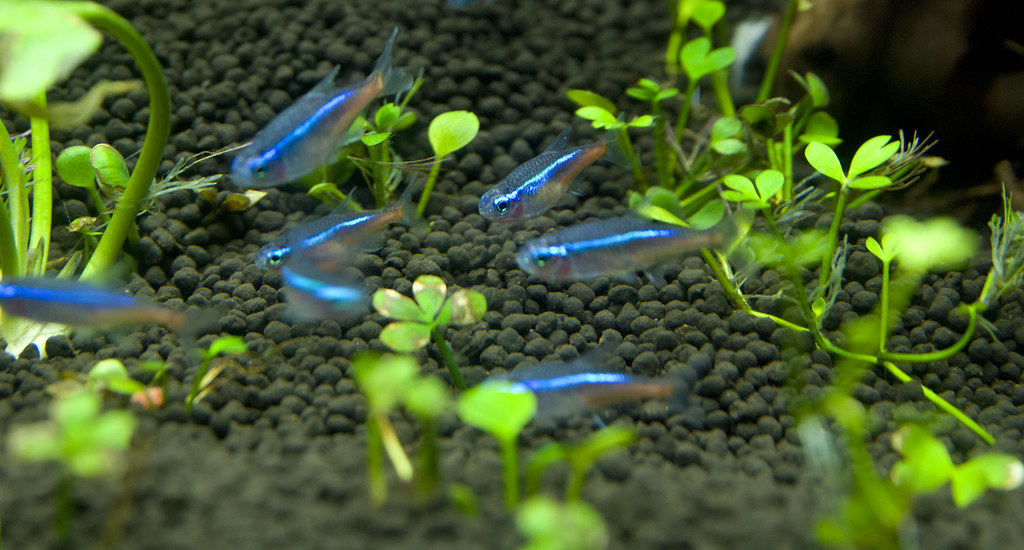
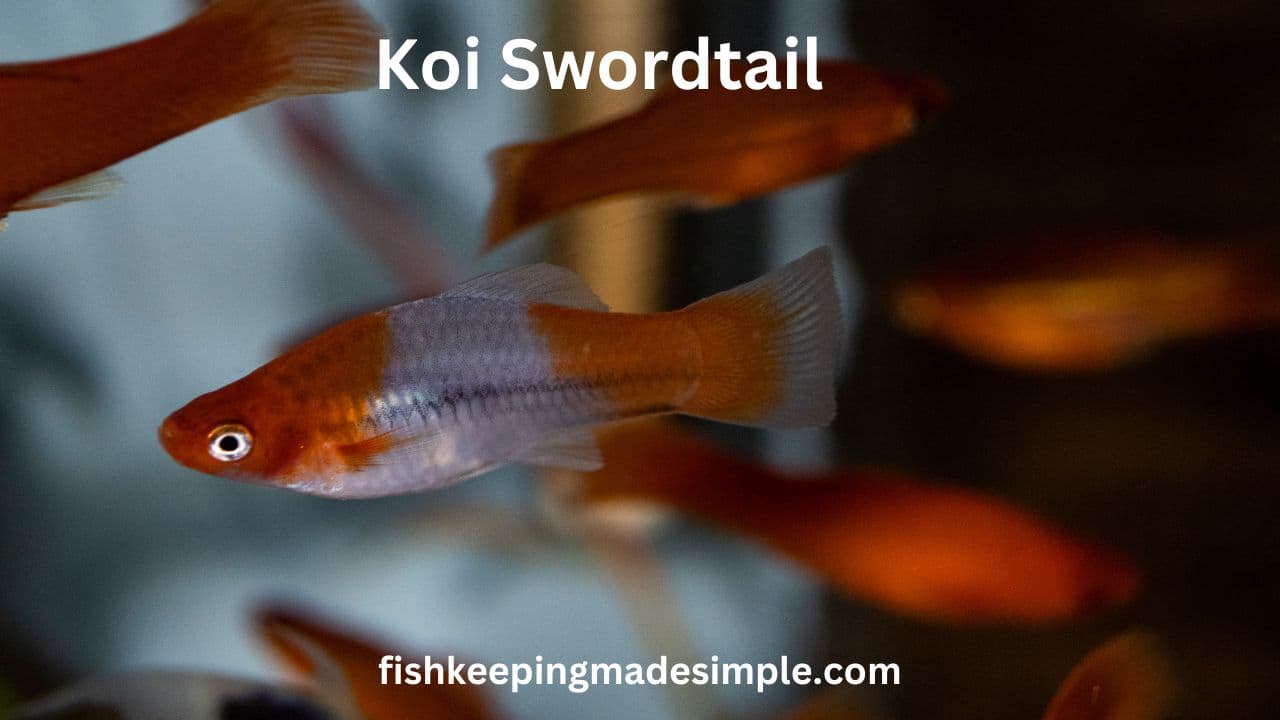

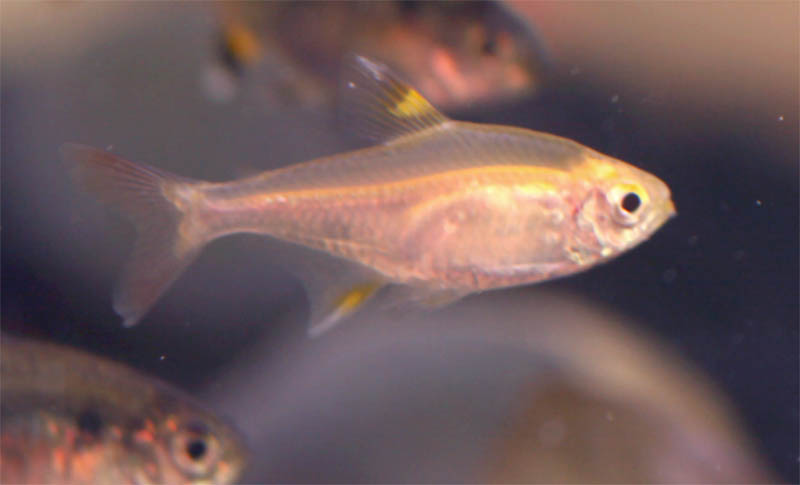
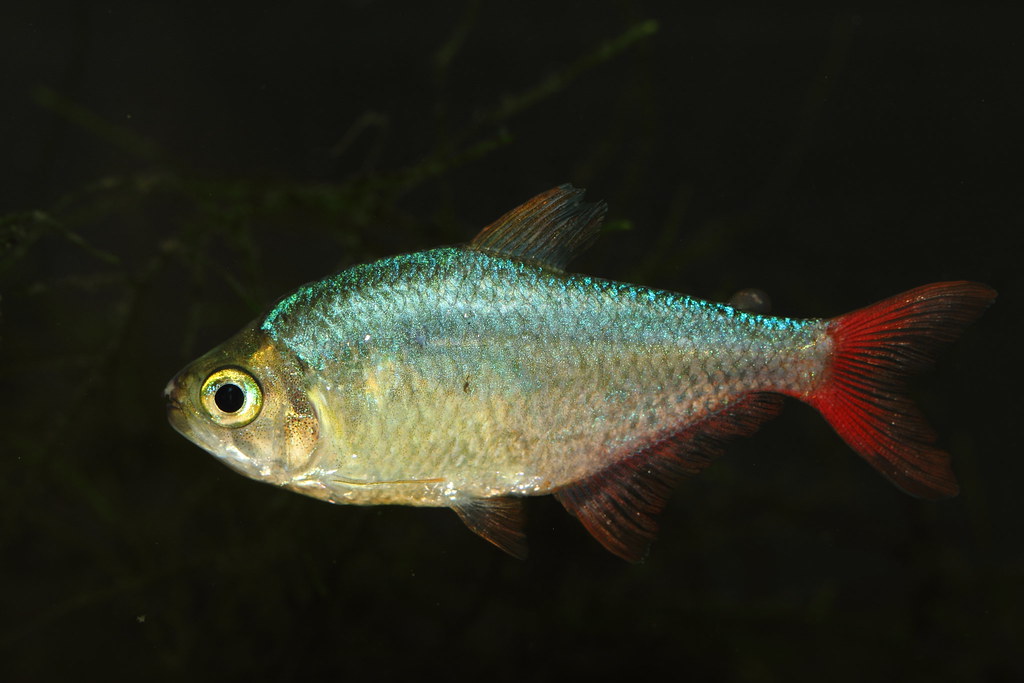
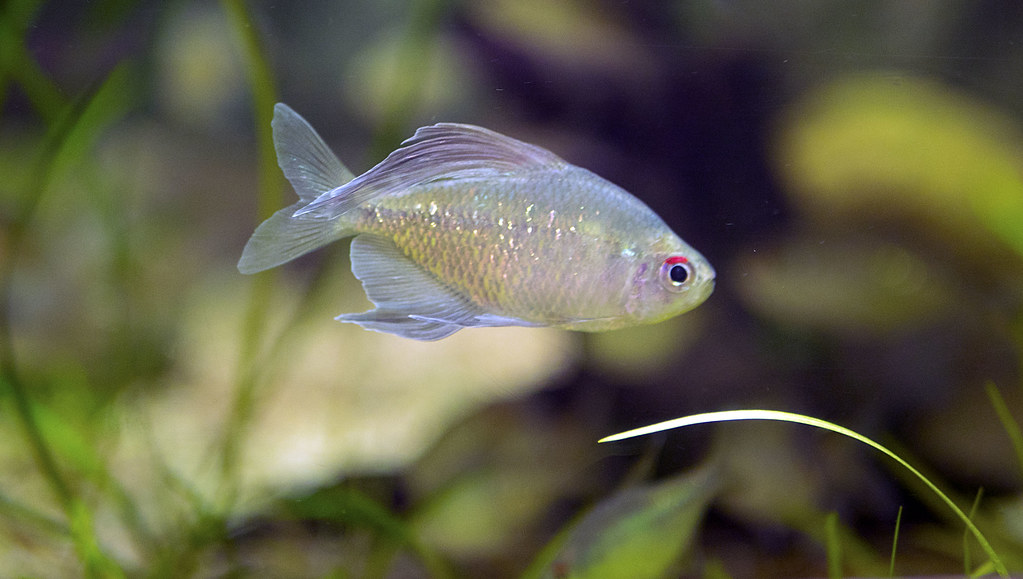
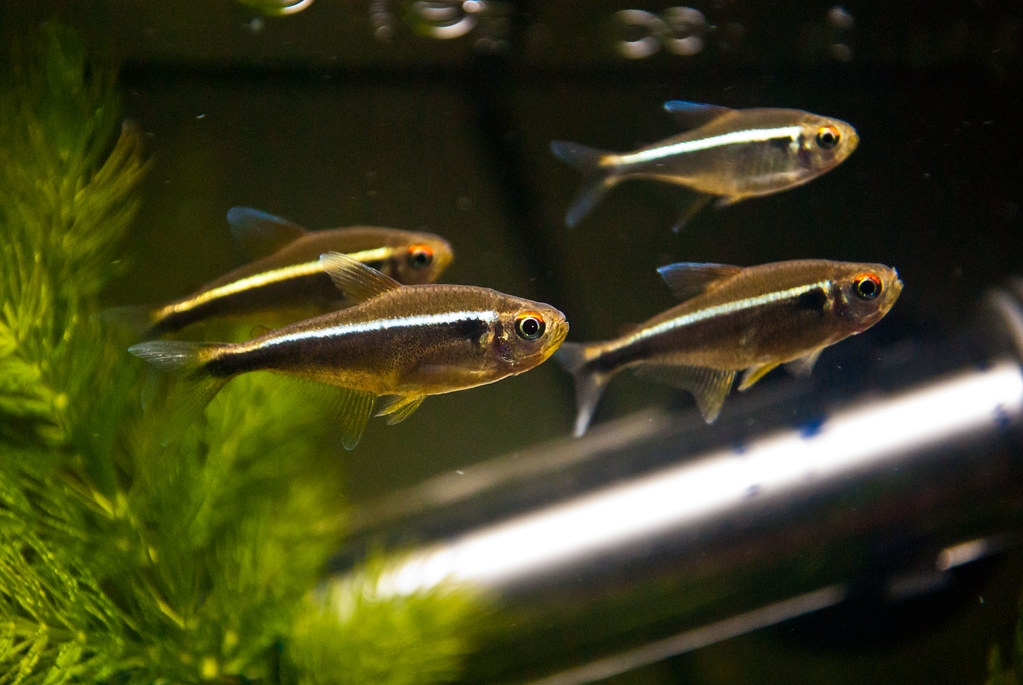
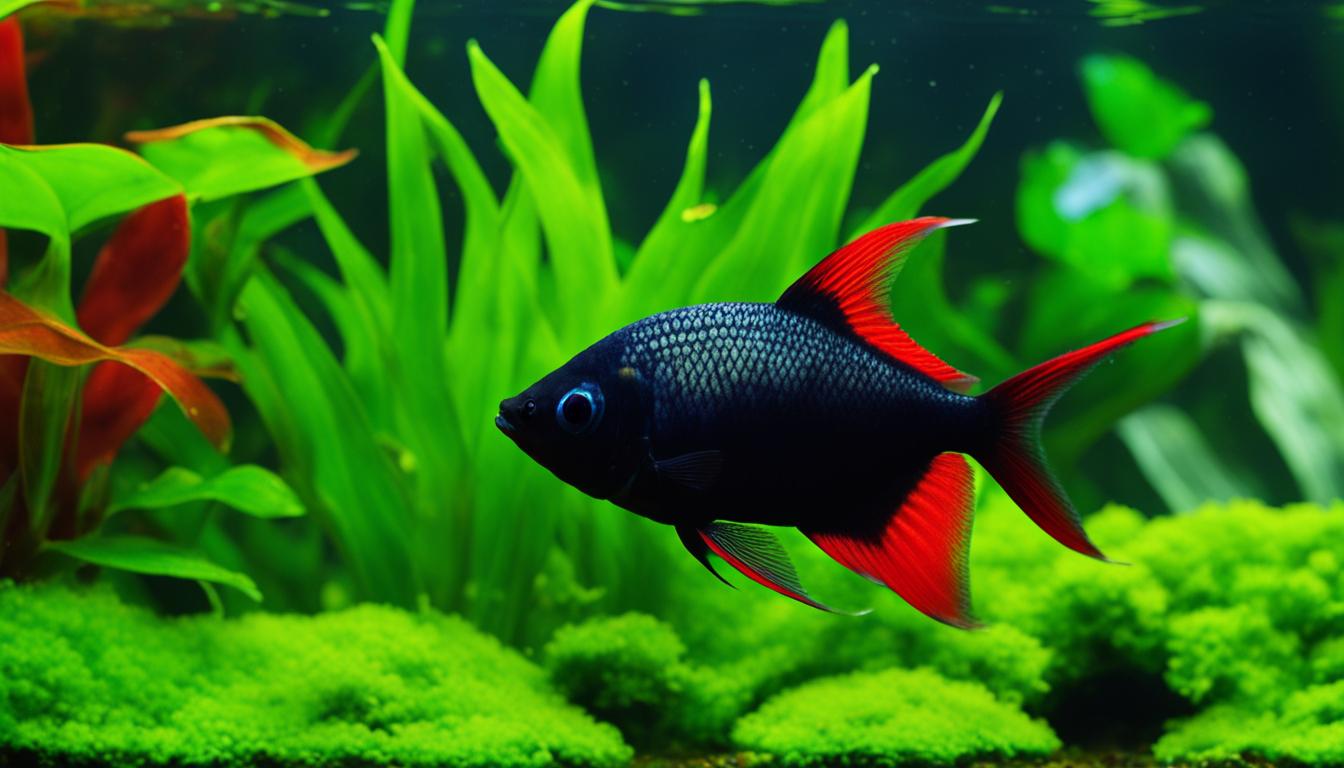
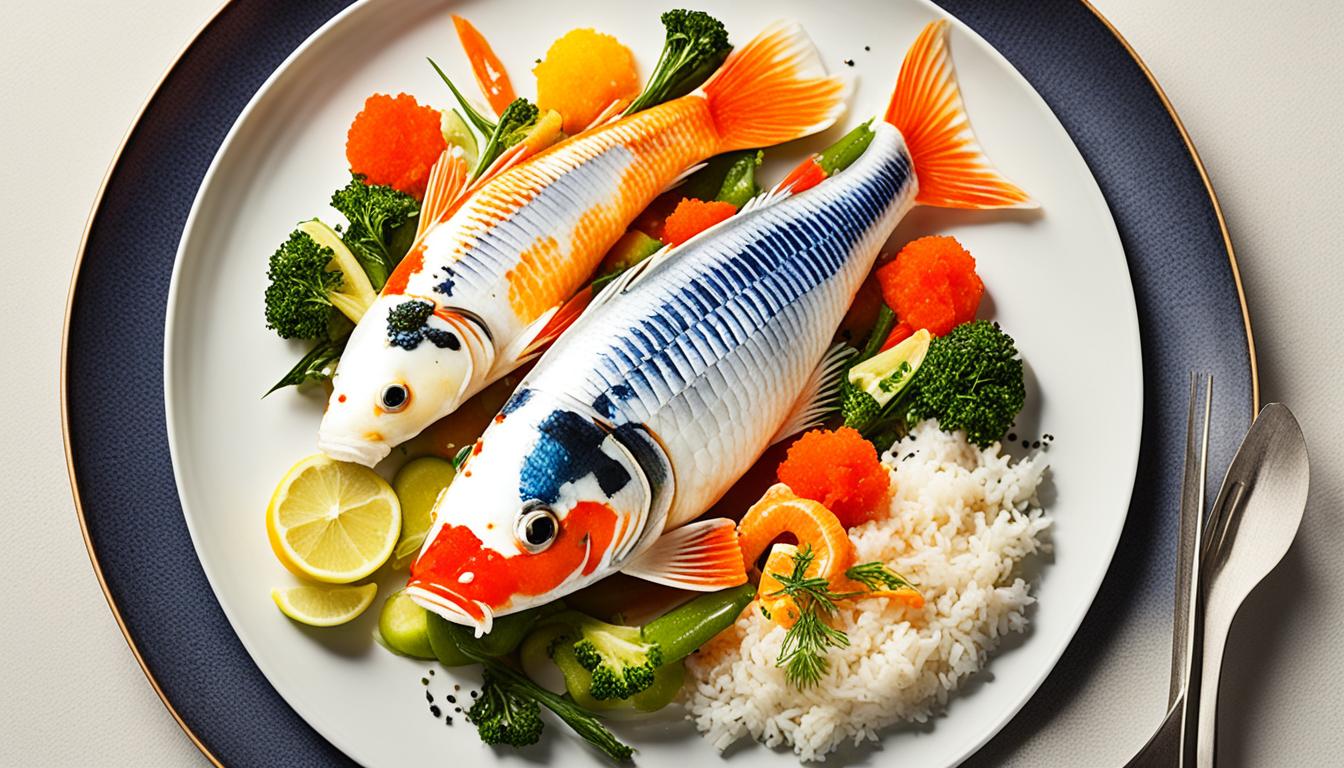
[…] Blue King Tetra, also known as Cochu’s Blue Tetra, is a vibrant and active fish that is safe to keep with other peaceful species. However, it may […]